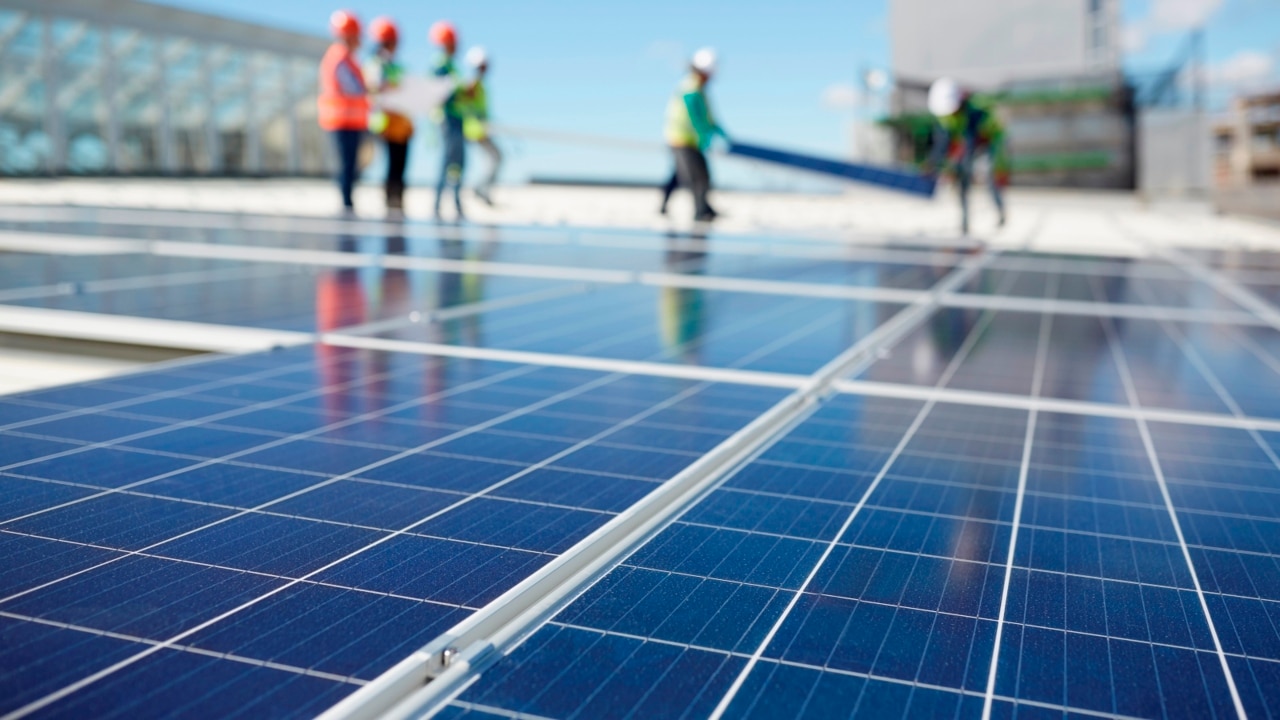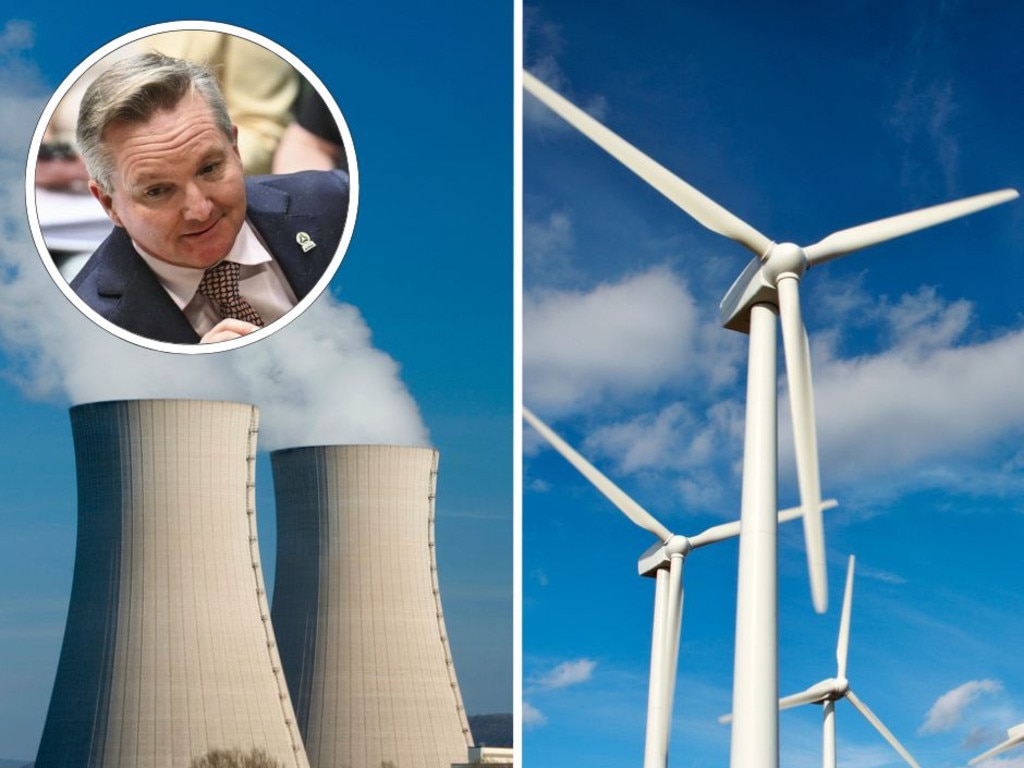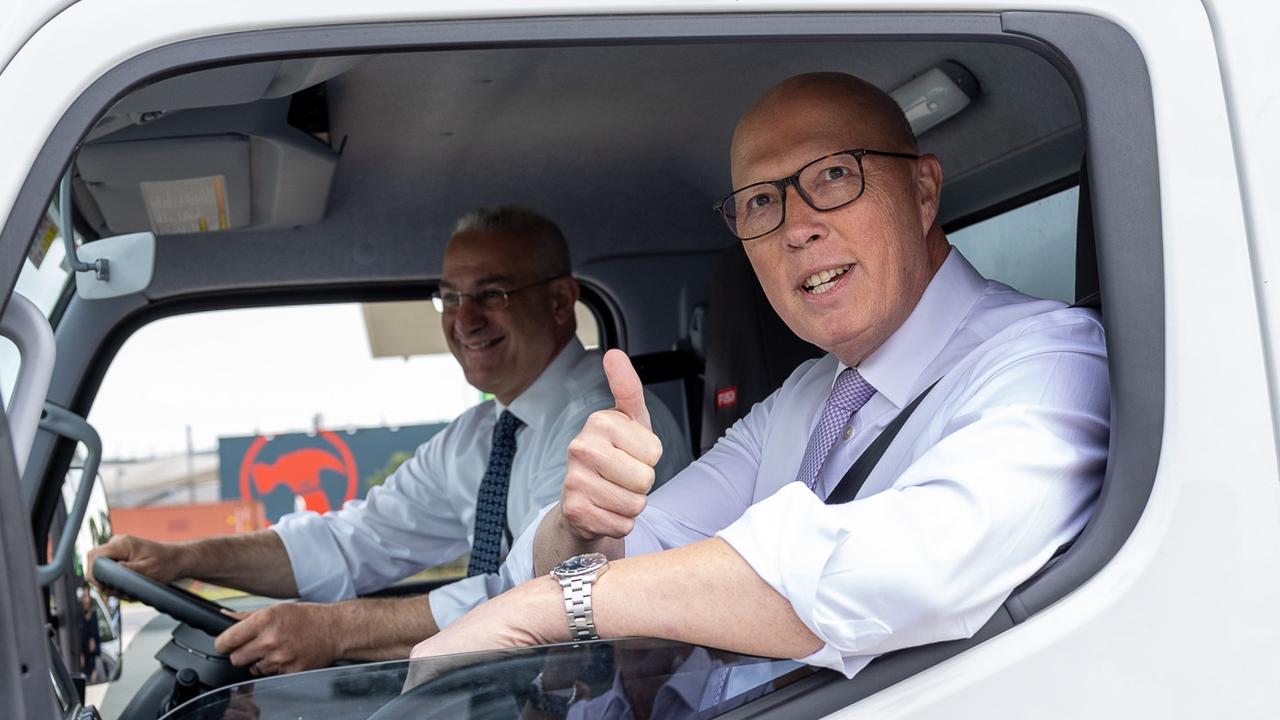Nuclear v renewables: Labor blows up Coalition’s nuclear option
Chris Bowen has targeted Peter Dutton’s pro-nuclear agenda, releasing new estimates that converting coal-fired power stations to 71 reactors would cost $387bn.

Climate Change and Energy Minister Chris Bowen has fired a new salvo in Australia’s energy wars, releasing government costings claiming that Peter Dutton’s proposal to convert coal-fired power sites into nuclear small modular reactors would cost $387bn.
Analysis by the Department of Climate Change and Energy says converting coal to nuclear – an idea floated by the Coalition – would cost up to $25,000 per taxpayer to replace retiring coal-fired plants with 21.3GW of nuclear generation.
The modelling, based on taxpayers footing the entire bill and existing GenCost and Australian Energy Market Operator data, predicts a minimum 71 300MW small modular reactors would be required to offset coal generation coming out of the system.
The government analysis, prepared to undermine Mr Dutton’s push that nuclear should be considered in the future energy mix, comes as the Coalition this week ramps up attacks on Labor’s “broken energy promises”.
As Anthony Albanese attempts to balance campaigning for the voice referendum with addressing cost-of-living issues, the Coalition will target Labor over higher energy bills, the threat of summer blackouts and barriers to achieving 43 per cent emissions reduction and 82 per cent renewables by 2030.
Opposition climate change and energy spokesman Ted O’Brien – a long-time advocate of nuclear power – said Labor was “failing” on its targets, including reducing household and business power bills by $275 a year from 2025. “Investment in renewable energy generation is at its lowest levels in five years, energy prices have soared by up to $1000, state energy policy is a jumbled mess, the market operator is warning of blackouts and emissions are actually going up, not down,” he said.

“Labor promised a green dream but is delivering a dark nightmare. Labor talks of climate wars, new industrial revolutions and becoming a superpower, but what counts is delivering outcomes. The scoreboard shows that Labor is failing on all fronts when it comes to climate and energy.”
Mr Bowen’s analysis says according to the 2022-23 GenCost report modelling, under the current policies scenario, replacing coal-fired power with nuclear would cost $387bn due to estimated capital costs of $18,167/kW for small modular reactors in 2030. The government will use the modelling, which suggests large-scale solar and onshore wind costs of $1058/kW and $1989/kW in 2030, to claim the cost of reactors is 20 times higher than Labor’s Rewiring the Nation Fund.
Mr Bowen said “the opposition want to trump the benefits of non-commercial SMR technology, without owning up to the cost and how they intend to pay for it”.
“Peter Dutton and the opposition need to explain why Australians will be slugged with a $387bn cost burden for a nuclear energy plan that flies in the face of economics and reason. After nine years of energy policy chaos, rather than finally embracing a clean, cheap, safe and secure renewable future, all the Coalition can promise is a multibillion-dollar nuclear-flavoured energy policy.”
The political fight, which pits Labor’s “renewables revolution” against the Coalition’s nuclear ambitions ahead of the 2025 election, comes after Mr Dutton in July attacked the government’s “renewable zealotry” and proposed converting old coal-fired power sites into small-scale nuclear plants. “In the Energy Minister’s eyes, he sees nuclear and renewables as competitors. We need to see them as companions. These new nuclear technologies are factory-built, portable, scalable and can even be relocated,” Mr Dutton, in a speech to the Institute of Public Affairs, said.
“New nuclear technologies can be plugged into existing grids and work immediately. Nuclear engineering specialist, Associate Professor Tony Irwin, points out that a SMR is about 18ha and can fit on any coal-fired power station site – like Liddell, which is about 100ha.
“We could convert or repurpose coal-fired plants and use the transmission connections which already exist on those sites. It’s no wonder more than 50 countries are exploring or investing in new SMRs and nuclear batteries.”

Mr O’Brien – who will clash with Mr Bowen on the ABC’s Q+A program on Monday – last month said tapping Australia’s world-leading uranium stocks and supporting a coal-to-nuclear transition in regional NSW and Queensland would secure baseload power, slash emissions and lower electricity bills.
The Coalition, which is yet to finalise its energy and climate change election policies, has not suggested taxpayers foot the bill for a long-term shift to nuclear. The opposition wants nuclear barriers removed to unlock private investment in the zero-emissions fuel, strengthen the grid and meet emissions reduction targets.
The Australian in June revealed that mining giant BHP urged the Albanese government ahead of the May budget to remove “prohibitions” on nuclear energy to help achieve 2030 and 2050 climate targets.
Mr Bowen, who has faced resistance from some regional industries and communities against Labor’s aggressive renewables push, recently conceded that lifting renewables in the grid to 82 per cent by 2030 was a “hard task”.
“It’s a little fashionable in Australia to say it’s too hard, that we won’t lift from 35 per cent renewable energy today to 82 per cent by 2030. I completely acknowledge it’s a big job. If it was easy, someone else would have done it,” Mr Bowen said in July.
“We are racing ahead at a rapid speed (on offshore wind) because we need to, we’re catching up. We’re several years behind, we should have started five years ago, maybe 10.”
Writing for The Australian online, Mr O’Brien said “Labor’s reckless indifference towards regional communities is jeopardising its target of 82 per cent renewables in the electricity grid by 2030”.
“Labor’s radical experiment of an electricity grid built almost entirely on wind and solar defies economics and engineering, and the scale and speed of its proposed rollout is unprecedented: 22,000 solar panels installed every day and 40 wind turbines every month until 2030, along with tens of thousands of kilometres of transmission lines,” Mr O’Brien wrote.
“To Labor’s alarm, its plan isn’t working. Renewables are being rolled out at half the pace envisaged and private sector investment has stalled: not one new renewable generation project reached final investment decision in the first two quarters of this year.
“Those most squarely in (Mr) Bowen’s way are residents of regional communities who are expected to bear the brunt of the economic, environmental and amenity compromises that Labor’s policy necessitates.
“Unless Labor changes course, the social license of renewables in regional areas will continue to deteriorate and its 82 per cent renewables target will be destined for the scrap heap of history.”








To join the conversation, please log in. Don't have an account? Register
Join the conversation, you are commenting as Logout